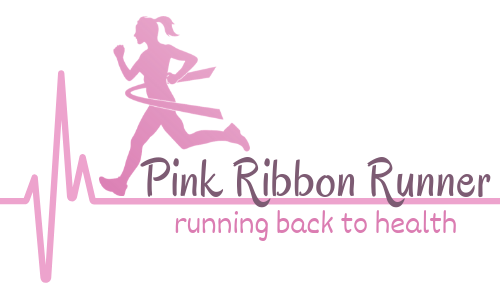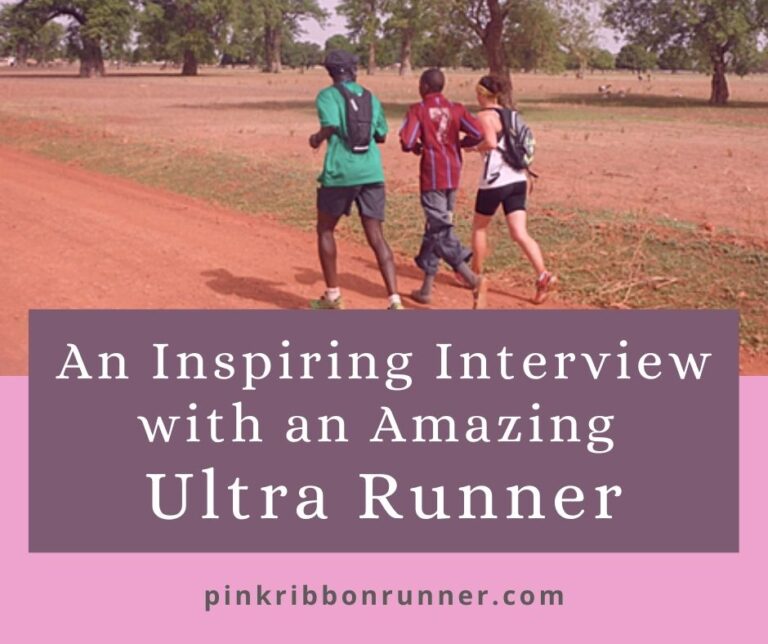The Kakabeka Falls Legion Half Marathon Demands Respect
Oh those hills! The Kakabeka Falls Legion Half Marathon has several steep hills that cause a runner’s mind to fill with doubt and dread weeks before the race. The tallest hill reaches over 980 feet evoking sleepless anxiety the night before. It is a tough course, balanced by beautiful views and tranquil stretches of road and trail. I have had the pleasure and pain of running it. Let me tell you more about this awesome race.
This post contains affiliate links. As an Amazon Associate, I earn from qualifying purchases.
The Kakabeka Falls Legion Half Marathon & 8K is the brainchild of Jim Gilbert. This year boasts the Juno Beach Challenge, which has runners racing both the 8 km and the 21.1 km distances. 2019 marks the third running of the half marathon and second Challenge event.
Why Juno Beach?
On June 6, 1944, 156,000 Allied troops, consisting mainly of US, British and Canadian armed forces, stormed the beaches of Normandy by air and sea. Of these, 14,000 were Canadian soldier, some had no combat experience but had trained for over a year to prepare for “anything”.
It’s almost impossible to describe the awesome power of it [Juno Beach Invasion]
– Tom Gunning, an 18 year old sailor on the HMCS Cape Breton –
(quote found in The Canadian Encyclopedia)
The invasion was originally scheduled for June 5 but was postponed a day due to bad weather. The Canadians landed on a section of beach code-named Juno. Soldiers dodged submerged mines as they waded through chest high sea to reach land, only to be targeted by a barrage of bullets in the German Kill-Zone. Amidst the chaos that day, 340 Canadian troops were killed, 574 wounded and 47 captured by German forces.
Juno Beach was a part of the massive Allied Normandy D-Day Invasion that has been heralded as the turning point of WW2. Every year, on June 6, the people of the villages that line Juno Beach pay tribute to the men who fought and died there.
We ran the 2019 Kakabeka Falls Legion Half Marathon & 8 K in support of the Royal Canadian Legion Branch 225 in honour of these soldiers and the 75th anniversary of the end of WWII.
The 8 K Race
Having only ran minimally the week before, I felt I had fresh legs for the Juno Challenge. I felt ready and excited to be running these challenging duo races this weekend
Saturday morning was the shorter 8 km run. My plan was to do a tempo run at my projected marathon pace. I am training for my first, ever, marathon this fall. So, since the Juno Challenge was an overall 18 mile race, I wanted to use it to test out my legs and endurance for a hopeful 5 hour marathon finish time. This meant I was to run the 8 km course faster than the previous year.
The 8 K Race Course Is Easier Than The Half Marathon
The 8 km starts at the Kakabeka Falls Legion, turns right down the Trans Canada Highway, in to the village of Kakabeka before looping in the nearby Provincial Park and returning back along the highway to the Legion again. It is a relatively easy course with a slight downhill grade on the way out and an uphill finish.
Saturday’s Juno 8K was no frills. The highway was open to traffic and there were no water stations or port-o-potties on course. The official 8 km on Sunday has all the bells and whistles, but those runners doing the Juno Challenge would be running the half marathon that morning. Both distances start at 7:00 am on Sunday.

Next Time Remember To Bring Water
I regretted not bringing water with me. Saturday morning became progressively warmer as we ran. My friend and marathon training buddy, Anita, came to my rescue and gave me one of her water bottles at just over halfway through the route. I was thankful and good-to-go after that.
Ad:Nathan Trail Mix Hydration Belt

I managed to run faster than my marathon pace for the 8 km. That was not my intention, but I got caught up in a combination of feeling good and racing. Oops. I hoped I didn’t pay the price during the half marathon the next day.
I crossed the finish line in just under 54 minutes and enjoyed a buffet brunch at the Legion with my friends. I spent the rest of Saturday resting, relaxing, rehydrating and preparing myself for the half marathon the next day.
The Half Marathon
My alarm went off at 4:45 am. Half awake and very groggy, I hit the snooze button. I woke up and jumped out of bed just after 5:00 am after hitting the snooze button twice. I needed to get moving if I was to eat breakfast and drink some coffee before getting ready. Caffeine first thing in the morning is always essential to prepare myself for a race.
It was recommended that we be at the Legion no later than 6:15 am to get a parking spot and our timing chips. My husband and I pulled into the parking lot at about 6:27 am. Oops. We still managed to rush around and get set up for the race start.
After the singing of Oh Canada, our National Anthem, the runners were lead out to the start by the Thunder Bay Police Pipe Band. The gun went off at 7:00am and we were off running.

Appreciation Of Our War Veterans
It was very foggy out as we started the run. The sun was already up, but the fog made for dim and hazy light as we headed out onto the highway. As the runners stormed the Trans Canada Highway in a mass onslaught in the fog, I couldn’t help but think of the soldiers storming the beaches of Normandy. We wore shorts and t-shirts, some of us with small hydration belts. Those soldiers ran in deep waters with heavy packs, rifles and combat gear. We dodged potholes, flies and gnats. The soldiers dodged submerged landmines, bullets and fallen bodies. I quietly and humbly thanked those who served our country amidst the chaos of war.

Running Down The Middle Of Canada’s Major Highway
The pack of runners thinned out as the 8 K participants turned right and the half marathoners went left. I followed the pack of half marathoners as we ran down the middle of a closed Trans Canada Highway. The race director, Jim, had managed to have a short section of THE main Canadian highway closed to traffic for 20 minutes. It was a real treat to run down the center of it. I waved to the stopped cars and trucks to thank them for their patience.
The runners had one mile to clear this busy highway before turning right onto secondary highway 588, which was also closed to traffic.
The 588 lures runners into a fast pace on its gradual downhill slope. This section is the easiest part of the course. Many a runner has been sucked into running faster here, not saving their legs for what is to come.
A Pleasant Canter Down A Country Road
Next, we turned right onto Harstone Drive where the race course follows a pleasant and quiet backcountry road. It leads out to a bridge over the picturesque Kaministiqua River. The fog, engulfing the river and bridge, made for a surreal setting as I crossed. I took a mental moment here to revel in the peace and tranquility. I was feeling good at this point.

I had a brief stop at the water station just across the bridge. I started to mentally prepare for the dreaded hills of Luckens Road. There was still about a mile left to go before I got there, but these hills are definitely a mental and physical challenge, I needed to psych myself up for them.
Hills That Are Feared And Revered
As I turned onto Luckens Road, I said, out loud for the runners around me to hear, “here we go!” I was now ready for the challenge that lay directly ahead.
Luckens road starts with over a mile of steady climb. It is grueling and hard on the legs, to say the least. While I have ran up it many times before, I was feeling the effects of the 8 km race yesterday in my legs about now. I ended up walking the last 100 meters or so of this relentless incline.
Once at the top of this punishing mile climb, the road levels out a little. This flat section is just enough to recover a high heart rate, but not long enough to recover tired legs. The rolling and sizable hills that Luckens is feared for were next up on the course.
Yes, you read that right. The mile long relentless climb was not the feared section of the course. It got worse.
There is a series of about 4 rolling hills. They are steep, both uphill and downhill. The valleys between them are short and do not give runners enough time to recover before having to go up the next hill. This is the section of the course that wears runners out. This is the section that is both feared and revered. There is no shame in walking parts of these. It is a tough run.

Scampering Into A Boreal Forest
Once at the top, I stopped briefly again at a water station. Here I slung back a salted caramel Gu gel and some water before heading off into the trail section of the course.
Ad: GU Energy Gel Sport Nutrition

The Poplar Point Trail transverses through the upper area of Kakabeka Falls Provincial Park. It isn’t a particularly difficult trail, but after the tiring climbs of Luckens, it can feel hard enough. With tired quads and hamstrings, I had to consciously tell myself to pick up my feet. I am a bit of a klutz on trails, and I did not want to trip on any rocks or tree roots. It has happened before that I ended a trail run with bloody knees and a scraped face.
Part of the way into the trail, my stomach started to act up. I was feeling nauseous and had some cramps. I started to worry about needing a port-o-potty at this point. There were none inside the 2 miles of bush. Out of sheer willpower, I refused to allow myself any luxury of relief. I pressed on in stubborn denial, telling my body to settle down and just run.
Normally one to enjoy a trail run, I was ever so thankful to exit the trees this time. My legs were tired and I was not feeling my best. I knew that once I was out of the forest, it would be a down hill then flat run for a few kilometers before I had to run uphill into the village.
I left the trail behind, not having tripped; all skin was intact. Success!
Renewed Spirit By The Mist Of The Falls
I met up with a friend, Holly, after exiting the trail. She was suffering the effects of Luckens too. We ran together for a bit, encouraging each other to press onward to the finish.
We rounded by the falls and quickly peeked over at the view. We allowed ourselves a brief moment to take in the beauty of the waterfall before continuing on. It was invigorating. Also knowing we didn’t have much left to run also bolstered us.
The race director stationed a volunteer photographer at the Falls. It is a fabulous backdrop to a wonderful keepsake. However, neither Holly nor I felt particularly photogenic at that point. We just wanted to get this run done and cross the finish line. We kept running.
Ad: Canon EOS Rebel T100 DSLR Camera

Uphill Into The Village
After running over the bridge of the falls, it was an uphill climb back into Kakabeka Village.
Here I stopped at the last water station on the course. I was offered a delicious smorgasbord of gummy bears, little pastry squares and other such goodies. However, my stomach was telling me that food was definitely not welcome at the moment. I settled for just a cup of water.
I ran through Kakabeka as some local folks cheered and cars honked. This renewed my spirits and gave me back a bit of spring in my step… for a little bit, anyways.
The Last Mile
After yet another small climb on the highway, I reached the mile 12 marker. Here the race director had positioned several volunteer runners to run in those struggling to finish. He calls then the “Last Mile Crew”. My husband was one of those runners. And now, he was a very welcome sight. I only had one mile left. I was tired, sore and my guts were still rolling inside. He asked if I wanted him to run me in to the finish. I said yes, of course, but only if he promised to keep me at my current pace and not let me walk. I wanted to finish strong despite my sufferings.
And that he did. Talking the entire way in, my husband told me about his run. He had finished the half marathon, well ahead of me. He talked to me about some of the people who had already finished and what great runs they had. I welcomed the distraction and kept running.

Crossing The Finish Line
I was very happy to be done. I crossed the finish line with a personal best for the course. The Juno Challenge was a success. I was happy with my overall performance.
I did manage to run the entire 18 miles of the Juno Challenge in just slightly over my desired marathon race pace. It will be very challenging to run my first 26.2 miles at this pace. I may need to rethink my goal for my first marathon. Perhaps simply to finish might have to be enough.
We celebrated a great event with another buffet breakfast before awards and prizes were given out.
What I Liked About The Race
The whole event is top notch. It is hard to single out just one favourite thing about this race.
- The volunteers are fabulous, having gotten out of bed much earlier than any of the runners, they were out setting up at 5:00 am. And, they still had smiles on their faces. Thank you for that.
- The water and aid stations along the course are sponsored. The runners vote for their favorite station, so the sponsors really ham it up for us. It is tremendous fun.
- The medals are beautiful and high caliber. The artwork is professionally done by artist Yuk-Sem Won. The half marathon medal is the largest and heaviest medal in my collection.
- Juno Challenge runners receive both the half marathon technical shirt and a special, limited edition finisher shirt for completing the challenge. The finisher shirt this year was a dark camo and very cool.
- The food! Juno Challenge runners were treated to two delicious buffet breakfasts, consisting of eggs, sausages, pancakes, toast, coffee and tea. There was even beef-on-a-bun, as well, on the Sunday. The aid stations had all sorts of wonderful goodies. And the finish line was stocked with bananas, frozen orange slices, and chocolate milk.
- Communications from the race director were frequent and timely. There was no doubt about race kit pick up, route directions, start times or other such instructions. The course was very well marked with pylons, directions and mileage signs. There was also information about Juno Beach, D-Day and the Battle of Normandy, which provided the runners some context to the race.

But The Best Was The Race Course
I could go on and on with good things to say about this run event. But, let me just say one final thing…
One of the things I like best about the half marathon course is that it is naturally divided into sections. Runners can tackle each section as it comes.
- Downhill on the highway for a fast start
- The beauty and peacefulness of running on a back country road
- The challenge of the Lucken’s hills
- A meandering trail section among the boreal forest trees
- A jaunt through the village of Kakabeka where the townsfolk cheer the runners to finish
Mentally, it makes for a very achievable half marathon, despite the difficulty of the elevation. All you need to focus on in the moment is finishing the section that you are running. When the next section comes along, then you focus on running that section. Before you know it, you are at the finish line.
As the race director promises, it is the best race course on the planet!
Okay… well… maybe one of the best race courses on the planet. He is a bit biased, after all. It really is a great course though. Definitely in the top 5, at least.
Run it and let me know where you rank it!








